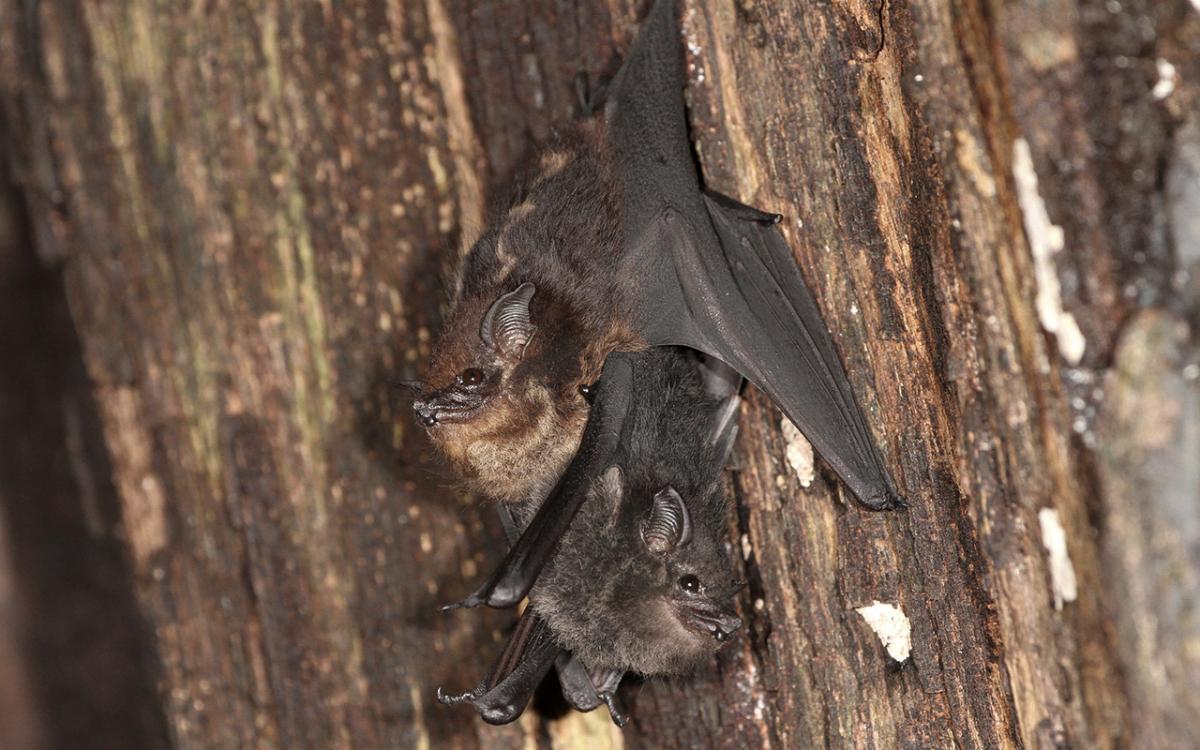A researcher from the Museum für Naturkunde Berlin has found rhythmic patterns in the sounds of bats and sperm whales. Her methods can help to understand the evolution of acoustic communication and protect species that can be recognized acoustically and thus distinguished from close relatives. Pattern recognition can also help to decipher the information contained in the sounds, Lara Burchardt and Mirjam Knörnschild report in the journal "PLOS Computational Biology". Open access to code and data is an important issue for the two researchers. The code for carrying out the analyses on the computer, including a sample data set, is therefore available in the freely accessible "Github" repository.
Animals make a wide variety of sounds: short and long, fast and slow, some with only one type of element (also called syllables), others with up to hundreds of different syllable types. They express them on land, under water and in the air. They are supposed to impress mating partners, drive away rivals and much more. Many of these sounds are rhythmic. But how can this be measured meaningfully and comparably?
"We have selected three very different animal vocalizations of bats and sperm whales to test our methods," says Lara Burchardt. The biologist investigated the temporal structures - or rhythms - of so-called isolation calls of the Greater sack-winged bat (Saccopteryx bilineata) and the spectacled leaf-nose (Carollia perspicillata). Young animals express these calls when they seek contact with their mother. The calls of S. bilineata are multisyllabic, those of the Seba's short-tailed bat are short and monosyllabic.
The third object of study are click series of a sperm whale (Physeter macrocephalus), recorded in the Caribbean near the island of Dominica by research colleagues from the University of Aarhus. The marine mammals use the sounds for echolocation to track down prey in their dark hunting grounds in the deep sea. The series are long and include up to about 250 clicks.
The sounds have been analyzed using five mathematical methods each to find and describe their rhythm. In addition, the aim was to determine which methods yield the best analysis results for which type of calls or clicks. For this purpose, two values were developed that indicate how well a certain rhythm describes an acoustic signal
"Animals' acoustic signals can help to answer many questions about their behavior, but so far the temporal structures are not always taken into account," said Burchardt. Therefore, there are still no established procedures that lead to comparable and reliable results that can be used by many researchers on various datasets.
Burchardt and Knörnschild have now developed a decision tree that makes it easier for researchers to choose the most suitable method for their data. In the current issue of the journal "PLOS Computational Biology", they discuss the advantages and disadvantages of the different methods and show how results of rhythm analyses can be visualized.
Open access to code and data is an important issue for the two researchers. The code for carrying out the analyses on the computer, including a sample data set, is therefore available in the freely accessible "Github" repository.
Furthermore, rhythm analysis is an important contribution to basic research on the perception of rhythms. This is probably also of great importance for the human language.
Publication: Burchardt LS, Knörnschild M (2020) Comparison of methods for rhythm analysis of complex animals’ acoustic signals. PLoS Comput Biol 16(4): e1007755.
https://doi.org/10.1371/journal.pcbi.1007755
Free pictures for publication with content of press release here
